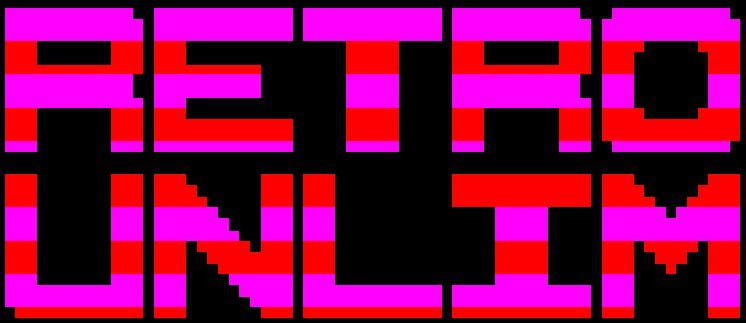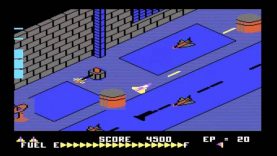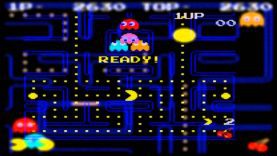Let’s Compare ( Space Harrier )
Gaming History Source
Description Source:
http://en.wikipedia.org/wiki/Space_Harrier
Space Harrier (スペースハリアー?) is a third-person rail shooter game, released by Sega in 1985. It was produced by Yu Suzuki, responsible for many popular Sega games. It spawned several sequels: Space Harrier 3-D (1988), Space Harrier II (1988), and the spin-off Planet Harriers (2001).
Space Harrier was originally made for the arcades, and later saw ports to many home game systems. Space Harrier’s release on the Sega Master System is notable, as there were two versions: one was just like the arcade, while the other, entitled Space Harrier 3-D was actually a sequel.
It was one of the first arcade games to use 16-bit graphics and Sega’s “Super Scaler” technology that allowed pseudo-3D sprite-scaling at high frame rates,[1] with the ability to scale as many as 32,000 sprites and fill a moving landscape with them,[2] along with over 32,000 colours displayed simultaneously on the screen. It also introduced a true analog flight stick for movement, with the ability to register movement in any direction as well measure the degree of push, which could move the player character at different speeds depending on how far the stick is pushed in a certain direction.[3] The game was also an early example of a third-person shooter.[4]
Gameplay
Space Harrier is set in the “Fantasy Zone”, a surreal world composed of bright colors and a checkerboard-styled ground. The enemies are also unique, featuring prehistoric animals, Chinese dragons, and alien pods. The player is forced along the levels, running or flying around enemy fire, while shooting back with fireballs via the character’s under-arm cannon (which doubles as a rocket-esque device allowing the character to fly). The character graphics are sprite-based, though the level backgrounds are pseudo-3D.
The arcade version of Space Harrier used digitized voices. When starting the first level, for example, you would be greeted with “Welcome to the fantasy zone!; Get ready!”. After defeating a boss, the player is assured that “You’re doing great!”
Like After Burner, Space Harrier was among the first (perhaps the very first) arcade game to feature a console in which the player sits, and which moves according to the joystick movement. There is also a non-moving sit-down version and a standard upright version.
The arcade version has a total of 18 levels, each containing a boss at the end. Three exceptions are the bonus levels (5th and 12th), and the 18th level, which is a boss rush containing some of the bosses encountered up to that point.
The 3-D Battles of World Runner by Square bears more than a slight resemblance to the game. Even more similar is Pony Canyon’s parody, Animal Attack Academy in which a Japanese schoolgirl fights Australian animals in nearly identical gameplay.[5]
[edit] Ports
The game was translated to various home computer systems and consoles. Among these, the ports for the Sega 32X, the Sega Saturn and the Sharp X68000 (the latter being a Japan-only) are considered to be the most faithful to the original arcade version.
The game is also playable on the Dreamcast (within Shenmue, Shenmue II and Yu Suzuki Game Works Vol. 1) and Xbox (within Shenmue II). It is included in Sega Arcade Gallery for the Game Boy Advance and the Sega Classics Collection (a compilation DVD including other games from the same era that were remade for modern audiences, to negligible success in the US, but to big success in Japan) for the PlayStation 2.
Space Harrier II for the Sega Genesis was released for Nintendo’s Virtual Console on December 18, 2006 while the first Space Harrier for the Sega Master System was released in Europe on October 17, 2008 and in North America on November 3, 2008.[6] The arcade version was released on the Virtual Console in Japan on March 26, 2009, in the PAL regions on May 29, 2009 and in North America on June 15, 2009.[7]
The arcade version of Space Harrier is available as an unlockable game in Sonic’s Ultimate Genesis Collection, released for the Xbox 360 and PlayStation 3 consoles. The port suffers from a few sound issues, such as off-pitch voices and music.
Notable ports
* Space Harrier Complete Collection. This collection offers the arcade version of Space Harrier, Space Harrier II, the Sega Master System version of Space Harrier and Space Harrier 3D. Also included as an easter egg was the Game Gear version of the game. It was released for the PlayStation 2 as the 20th volume of Sega Ages.













